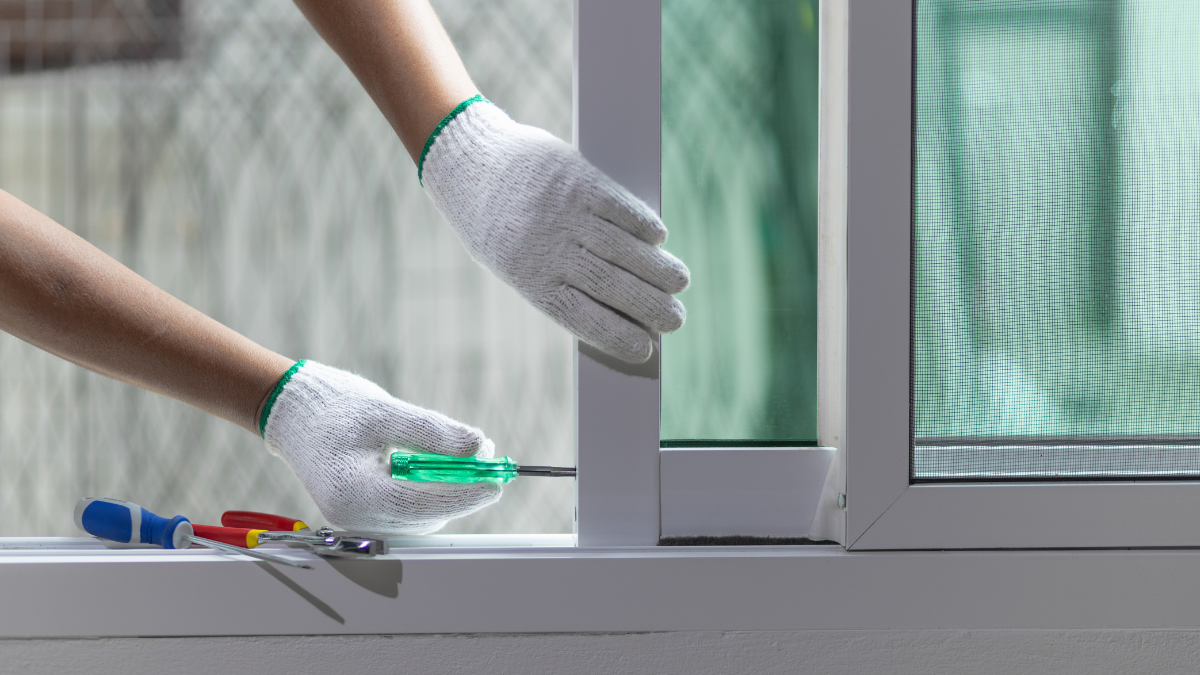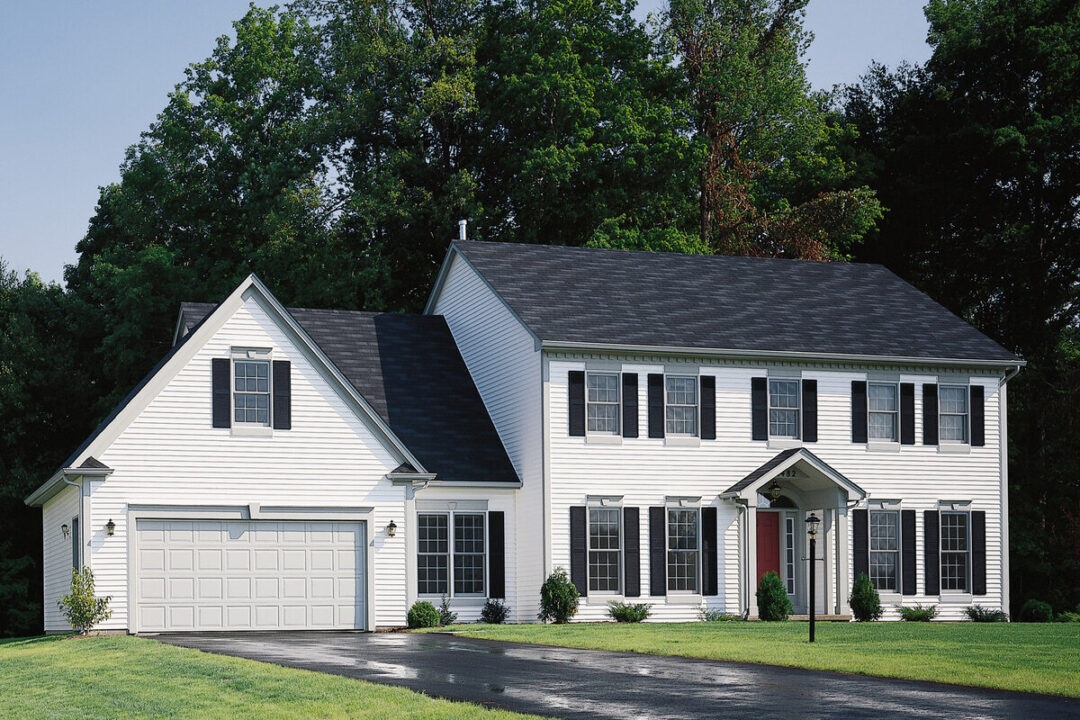If you’ve noticed a persistent cloudiness on your windows, you’re not alone. Although it can be stress inducing, cloudy windows are not always cause for concern. Window condensation is a common problem that many homeowners face. Understanding the root causes of this issue can help you find the right solutions to restore clarity to your windows.
Thermal King Windows have helped thousands of Lee’s Summit homeowners navigate their window issues. In this article, we’ll explore the science behind window condensation, the role of weather and indoor factors, as well as the importance of window materials and installation. We’ll also provide some quick fixes and long-term solutions to help you enjoy clear windows once again.
Understanding the Basics of Window Condensation
Condensation occurs when warm, moist air comes into contact with a cooler surface like a window pane. As the air cools, it loses its capacity to hold moisture, leading to the formation of water droplets or frost on the window. This can be particularly common during colder months when temperature differences between the indoors and outdoors are more pronounced. Just because your windows are cloudly does not necessarily mean your window seal is broken.
Common Causes of Window Condensation
Several factors contribute to window condensation. One common cause is excessive indoor humidity. Activities such as cooking, bathing, and even drying laundry indoors can introduce more moisture into the air. Poor ventilation can also contribute to condensation, as it prevents the moist air from escaping and allows it to accumulate on windows. Additionally, a lack of insulation around windows can enable cold air to penetrate from the exterior, exacerbating the potential for condensation formation.
Moreover, the type of window glass and its thermal efficiency play a significant role in determining condensation levels. Double or triple-pane windows with low-emissivity coatings can help reduce condensation by maintaining higher surface temperatures, thereby minimizing the risk of moisture accumulation.
The Impact of Weather on Window Clarity
The weather outside can have a significant influence on window clarity. Temperature and humidity levels play a vital role in determining the likelihood of window condensation. Understanding the impact of these factors can help you better manage the issue.
How Temperature Affects Your Windows
Temperature differentials between the indoors and outdoors create ideal conditions for window condensation. During the winter months, when the interior is typically warm and the exterior is colder, condensation is more likely to occur. In contrast, during the summer months, when the interior is air-conditioned and the outside is hot and humid, condensation may form on the exterior surface of windows.
Furthermore, extreme temperature fluctuations can impact the structural integrity of windows over time. Prolonged exposure to rapid temperature changes can cause expansion and contraction of window materials, leading to potential warping or seal damage, which can affect both clarity and insulation.
Humidity and Your Windows
Humidity levels within your home also play a crucial role in the formation of window condensation. High humidity can increase the likelihood of moisture condensing on windows. Maintaining optimal humidity levels through proper ventilation and dehumidification can help minimize condensation issues.
In addition to indoor humidity levels, external humidity conditions can also influence window clarity. Areas with high outdoor humidity levels may experience more frequent condensation on windows, especially during temperature differentials. Understanding the local climate and its seasonal variations can assist in implementing effective strategies to preserve window clarity.
Indoor Factors Contributing to Cloudy Windows
While weather conditions certainly contribute to window condensation, several indoor factors can exacerbate the problem. Understanding these factors can help you mitigate the cloudiness on your windows.
Indoor Heating and Window Condensation
Heating your home during colder months can lead to increased window condensation. As warm air circulates around your home, it comes into contact with cooler window surfaces, causing condensation. Proper insulation, weatherstripping, or the use of energy-efficient windows can help reduce heat transfer and minimize condensation formation.
Ventilation and Its Role in Window Clarity
Poor ventilation prevents the circulation of fresh air, enabling moisture to accumulate on windows. Properly ventilating your home, especially in moisture-prone areas like kitchens and bathrooms, can help mitigate condensation. Utilizing exhaust fans or opening windows periodically can help remove excess moisture and improve indoor air quality.
Another critical factor contributing to cloudy windows is the presence of indoor plants. While indoor plants are known for their air-purifying qualities and aesthetic appeal, they can also release moisture through a process called transpiration. This moisture can contribute to the overall humidity levels in your home, potentially leading to increased condensation on windows. Placing a dehumidifier near your indoor plants or ensuring proper ventilation can help balance the humidity levels and reduce window condensation.
Household Activities and Window Condensation
Various household activities, such as cooking, showering, and even drying clothes indoors, can release significant amounts of moisture into the air. This moisture can settle on window surfaces and contribute to cloudiness. To combat this issue, consider using lids on pots while cooking, running exhaust fans while showering, and utilizing a clothesline outdoors for drying laundry. These simple adjustments can help minimize moisture buildup and keep your windows clear.
The Role of Window Materials and Installation
The type of window materials used and the quality of installation can also impact window condensation. Understanding these factors is crucial when selecting windows and ensuring they are properly installed.
When considering window materials, it’s essential to delve deeper into their specific properties and how they interact with your home environment. For example, wood windows offer a classic aesthetic and excellent insulation but require more maintenance compared to vinyl or aluminum. On the other hand, vinyl windows are low maintenance and provide good thermal performance, making them a popular choice for many homeowners. Understanding the pros and cons of each material can help you make an informed decision that suits your needs and preferences.
Different Window Materials and Their Impact on Condensation
Window materials, such as vinyl, wood, or aluminum, have varying abilities to resist condensation. Energy-efficient windows with low U-values and high-quality weatherstripping can help minimize condensation by reducing heat transfer and air infiltration. Consulting with a professional to determine the best window materials for your climate can help mitigate condensation issues.
Moreover, the geographical location of your home plays a significant role in determining the most suitable window materials. For instance, homes in colder climates may benefit from windows with multiple panes and insulating gas fills to enhance thermal efficiency and reduce condensation. Understanding how different window materials perform in various climates can guide you in selecting the most effective solution for your specific location.
The Importance of Proper Window Installation
Improper window installation can create gaps and air leaks that allow moisture to enter your home and accumulate on windows. It’s crucial to choose experienced professionals who adhere to industry standards during the installation process. Properly installed windows will help minimize condensation and ensure optimal window performance.
Furthermore, proper window installation not only prevents condensation issues but also enhances the overall energy efficiency of your home. A well-installed window ensures a tight seal, reducing heat loss during the winter and heat gain during the summer. By investing in professional installation, you not only protect against condensation but also improve the comfort and sustainability of your living space.
Solutions for Cloudy Windows
If you’re tired of dealing with cloudy windows, there are both quick fixes and long-term solutions that can help restore clarity and prevent future condensation issues.
Quick Fixes for Window Condensation
For immediate relief, you can try using a dehumidifier in moisture-prone areas, adjusting your thermostat to balance indoor and outdoor temperatures, or using window film or insulating curtains to create a barrier between the warm indoor air and the cold window surface. These quick fixes can provide temporary relief while you explore long-term solutions.
Long-Term Solutions for Clear Windows
Investing in energy-efficient windows with low U-values, high-quality weatherstripping, and proper insulation can significantly reduce window condensation. Improving ventilation through the use of exhaust fans or mechanical ventilation systems, and maintaining optimal indoor humidity levels, can also help prevent future condensation issues. Consulting with a professional to assess your specific situation and recommend appropriate solutions is highly recommended.
Reliable Window Replacement and Repair in Lee’s Summit
We hope this article has helped you understand that cloudy windows are not always cause for concern!
Thermal King Windows has completed over 10,000 window replacement projects in the Kansas City area. If you are worried your window seal may be broken, have it inspected by one of the experts at Thermal King Windows for free! We’d love to see if we would be a good fit for your project. Contact us today to get started!




